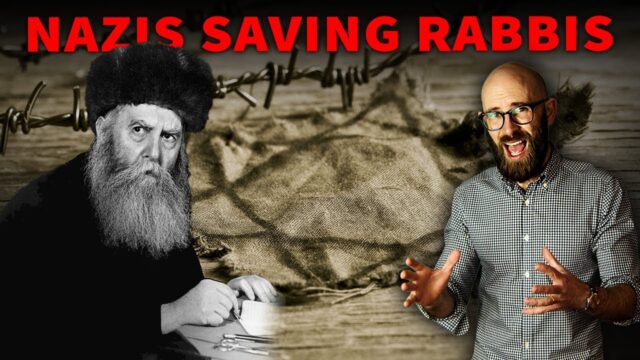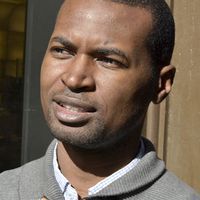“Unlikely Allies: The Shocking Nazi Mission to Rescue a Jewish Leader that Shook History”
On September 1, 1939, the sound of thunder—66 infantry divisions, 2,750 tanks, and 1,315 aircraft—erupted across the borders of Poland, marking the beginning of World War II. The Nazis were out for blood, and they weren’t picky about whose. Yet, amidst the chaos of genocide, an unlikely hero emerged from the shadows of the Third Reich—a man tasked with the mission of saving not just any life, but that of Rabbi Yosef Schneerson, the sixth Lubavitcher Rebbe, a figure revered in Jewish history. How does one find salvation when the very hands that grasp for it wield the sword of oppression? This intriguing tale of survival unfolds within the harsh realities of war, where even enemies of morality can become unexpected allies. So, grab your coffee and get cozy; you’re about to dive into a captivating story that’s not just about the struggle for life amidst death, but also about the absurd contradictions of human behavior in times of despair. Curious? Well, buckle up! You’re in for a ride through lesser-known history that reminds us that sometimes—against all odds—hope finds a way to shine through the darkness. LEARN MORE On September 1, 1939, 66 infantry divisions, 2,750 tanks, and 1,315 aircraft of the German Wehrmacht thundered across Germany’s eastern border into neighbouring Poland, plunging Europe into the Second World War. Two weeks later on September 17, the Soviet Red Army followed suit, invading Poland from the east with 33 divisions. The Polish armed forces, brave but outnumbered and outgunned, could do little to resist the savage two-front onslaught. In the wake of the advancing Wehrmacht troops and tanks followed the Einsatzgruppen or “task forces” – special SS death squads tasked with rounding up and executing priests, politicians, and other members of the Polish intelligentsia who might resist the occupation; as well as Jews, Romani, and the mentally ill, whom Nazi ideology deemed to be untermenschen or “subhuman.” The Polish government capitulated on October 6, and by the end of 1939 the occupying Germans and Soviets had murdered nearly 80,000 Poles. Millions more would follow over the next five years. Yet amidst this orgy of murder and destruction, Major Ernst Bloch, an agent of the Abwehr or German Army Intelligence Service, was dispatched on a seemingly unthinkable mission: to locate and rescue Rabbi Yosef Schneerson, the sixth Lubavitcher Rebbe – one of the most beloved and influential Jewish thinkers and leaders in modern history. This is the unlikely forgotten story of how the Nazis saved a major Jewish figure from the jaws of their own genocide.
On September 1, 1939, 66 infantry divisions, 2,750 tanks, and 1,315 aircraft of the German Wehrmacht thundered across Germany’s eastern border into neighbouring Poland, plunging Europe into the Second World War. Two weeks later on September 17, the Soviet Red Army followed suit, invading Poland from the east with 33 divisions. The Polish armed forces, brave but outnumbered and outgunned, could do little to resist the savage two-front onslaught. In the wake of the advancing Wehrmacht troops and tanks followed the Einsatzgruppen or “task forces” – special SS death squads tasked with rounding up and executing priests, politicians, and other members of the Polish intelligentsia who might resist the occupation; as well as Jews, Romani, and the mentally ill, whom Nazi ideology deemed to be untermenschen or “subhuman.” The Polish government capitulated on October 6, and by the end of 1939 the occupying Germans and Soviets had murdered nearly 80,000 Poles. Millions more would follow over the next five years. Yet amidst this orgy of murder and destruction, Major Ernst Bloch, an agent of the Abwehr or German Army Intelligence Service, was dispatched on a seemingly unthinkable mission: to locate and rescue Rabbi Yosef Schneerson, the sixth Lubavitcher Rebbe – one of the most beloved and influential Jewish thinkers and leaders in modern history. This is the unlikely forgotten story of how the Nazis saved a major Jewish figure from the jaws of their own genocide.
The Hasidic Jewish movement of Chabad [“Ha-bad”, with a fricative on the H] was founded in 1775 by rabbi Schneur Zalman in the Russian village of Liozno – now Liozna in Belarus. Named after the combination of the words Chokmah, Binah, and Da’at – Wisdom, Understanding, and Knowledge – Chabad was heavily based upon Kabbalah or Jewish mysticism and emphasized such concepts as intellectual inquiry being the gateway to understanding God and the idea that people are not inherently good or evil but rather face a continuous inner struggle between these two extremes. In 1796, Rabbi Zalman published the Tanya, the foundational text of Chabad. Today, the movement preaches 10 basic Mitzvahs or commandments: Ahavas Yisroel, or the love of one’s fellow Jew; Chinuch or Torah Education; Torah Study; the donning of Tefillin – leather boxes containing Jewish texts wrapped around the left arm and head during weekday morning services; the affixing of a mezuzah or scriptural scroll on the doorpost of a house; observing Tzedakah or the giving of alms every weekday; the possession of Jewish holy books; the lighting of Shabbat and festival candles; the following of Kashrut or Jewish dietary laws; and the following of Taharas Hamishpocho or the Torah perspective on married life.
In 1813, Rebbe Zalman’s successor, Dovber Schneuri, moved the seat of the movement to the village of Lyubavitchi in Smolensk Oblast, where he established a long-lived dynasty of Rebbes. In 1915, the fifth Rebbe, Shalom Dovber, left Lyubavitchi and relocated the movement – now commonly known as Chabad-Lubavitch – to the Russian city of Rostov-on-Don.
Rabbi Dovber’s only son, Yosef Yitzchak Schneerson, was born in Lyubavichi on June 21, 1880. From an early age, Yosef was groomed to become the next Lubavitcher Rebbe, being appointed his father’s personal secretary at age 15 and attending numerous rabbinical conferences in Kovno and Vilna – today Kaunas and Vilnius in Lithuania – to discuss various issues affecting Jews across the Russian Empire. In 1897 he married Nechama Schneerson, great-grand-daughter of Rabbi Menachem Mendel Schneerson, the Tzemach Tzedek or third Rebbe, in 1898 he was appointed executive director of the Teshivah Tomchei Tmimim talmudic seminary, founded by his father the previous year. Throughout his long career, Schneerson proved himself a brilliant religious scholar, a skilled civic organizer, and a staunch advocate for the rights and welfare of Russian Jews, who were often persecuted by the Tsarist and later Bolshevik governments. In 1901 he worked with various business leaders across the Russian Empire to establish textile factories in the cities of Dubrovna and Mahilyow which ultimately employed some 2,000 Jewish employees, while during the 1904-1905 Russo-Japanese war he arranged the shipment of kosher food to Jewish conscripts serving in the Russian army. Meanwhile, he petitioned government officials and bankers in various European countries to use their influence to end pogroms or antisemitic riots in Russia. For these activities he was arrested four times by the Tsarist government, but released every time due to lack of evidence.

















